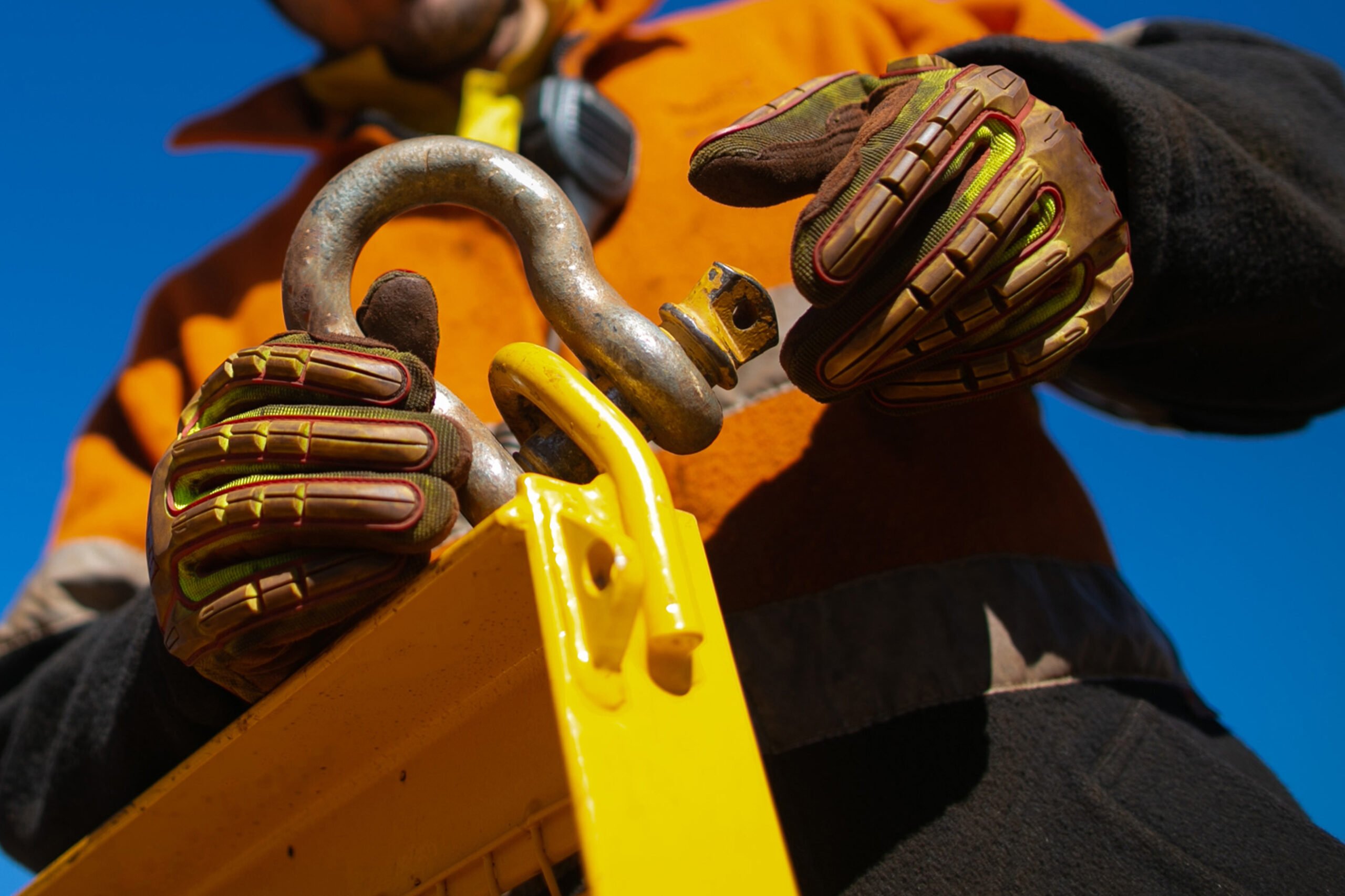Performance Evidence
To demonstrate competency in this unit, a candidate must meet the elements and performance criteria by slinging and directing the movement of at least five loads of differing shapes, sizes and weights.
The loads must be moved by a slewing mobile crane of a maximum rated capacity of at least seven tonnes.
The candidate must:
- check relevant workplace information, including safe work method statements (SWMSs), and equipment service and maintenance records and checklists
- perform all activities in compliance with safe work practices and workplace-specific procedures and policies, and check, use, maintain and store equipment in compliance with manufacturer requirements
- identify hazards and use appropriate risk controls and safety measures and equipment
- determine load weight and travel path in consultation with crane operator
- select and inspect appropriate lifting gear and apply slinging techniques appropriate to the type of load, its mass and centre of gravity
- identify the working load limit (WLL) tags of the lifting equipment and gear and calculate the deration of the WLL resulting from the slinging techniques applied
- make temporary connections to loads using fibre or synthetic ropes
- use radio communication and hand and whistle signals to guide the crane operator, including when the load is out of sight of the crane operator.
The candidate must use the following bends and hitches when slinging and directing the movement of loads:
- single sheet bend
- clove hitch
- rolling hitch
- bowline.
Load types must include:
- Stillage containing at least ten scaffolding standards or loose steel pipes of 200 kg or more
- Ten loose steel pipes, of at least 2 m length, that need wrapping
- an uneven load of at least two tonnes requiring slinging
- steel plate of at least 1.5 m x 2 m x 25 mm
- a round load with a minimum diameter of 300 mm and minimum length of 3 m.
The candidate must direct each load through at least 180 degrees of the crane’s slewing radius.
Each of the following must be used at least once:
- flexible steel wire rope (FSWR) sling
- synthetic sling
- chain sling (including shortener)
- spreader bar or lifting beam
- tag line
- shackles
- eyebolts
- plate clamps.
Knowledge Evidence
To be competent in this unit, a candidate must demonstrate knowledge of:
- safe work requirements for dogging under Commonwealth and state or territory work health and safety (WHS) legislation, standards and codes of practice
- workplace information, including legislative requirements covered by:
- SWMSs
- permits and certifications
- information about equipment:
- service and maintenance checklists and records
- manufacturer specifications and manuals
- workplace procedures, including emergency plans and incident reporting
- hazard identification and mitigation strategies, including the hierarchy of control:
- elimination
- substitution
- isolation
- engineering controls
- administrative controls
- use of personal protective equipment (PPE)
- hazards commonly encountered in dogging:
- instability of landing surfaces
- overhead and underground hazards
- insufficient lighting
- traffic
- weather
- pedestrian traffic
- work at heights
- risk controls and equipment:
- traffic management plan
- traffic barricades and control
- exclusion zones
- pedestrian barricades
- PPE
- lights
- fall prevention and fall arrest equipment
- PPE:
- hard hat
- safety boots
- gloves
- high-visibility clothing
- breathing, hearing, sight and skin and sun protection
- hand, whistle and two-way radio communication, including signals for:
- stop
- hoist up and down
- luff boom up and down
- telescope in and out
- slew left and right
- selection, inspection, care, handling, application, limitations and storage of dogging equipment and gear:
- (FSWR sling
- synthetic sling
- chain sling (including shortener)
- spreader bar or lifting beam
- tag line
- shackles
- eyebolts
- plate clamps
- slinging techniques
- load destination stability, load capacity and safe access for walking and unpacking the load:
- ground
- loading platforms
- suspended floors
- vehicles
- mathematical processes for calculating deration of WLL of lifting equipment and gear due to slinging techniques
- methods of making temporary connections to loads using fibre and synthetic ropes:
- single sheet bend
- clove hitch
- rolling hitch
- bowline.
Source:training.gov.au – CPCCLDG3001 – Licence to perform dogging

